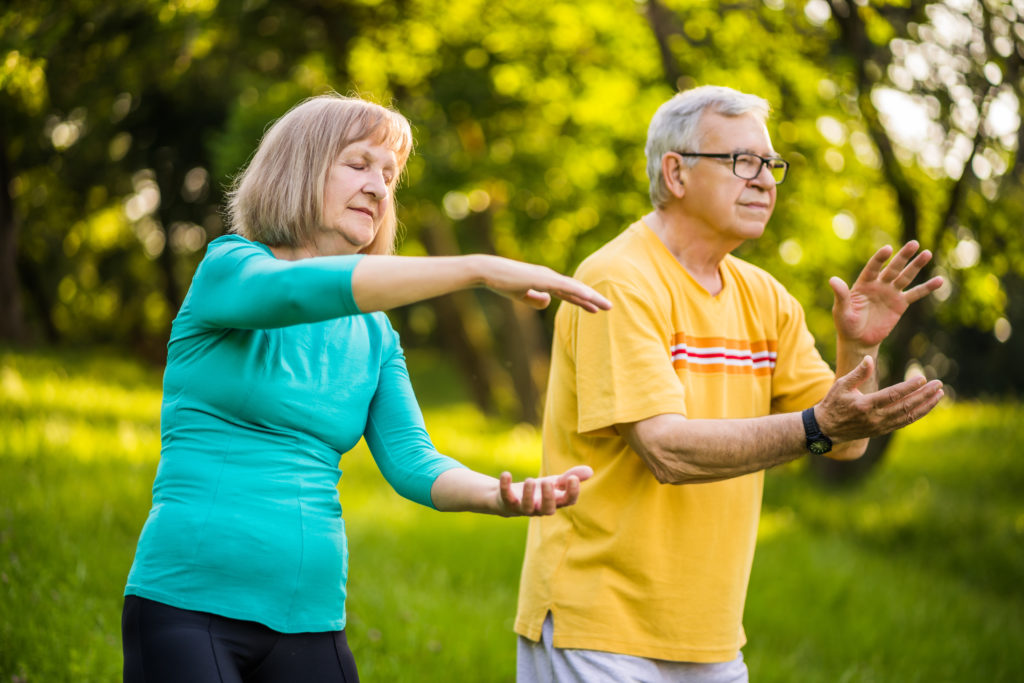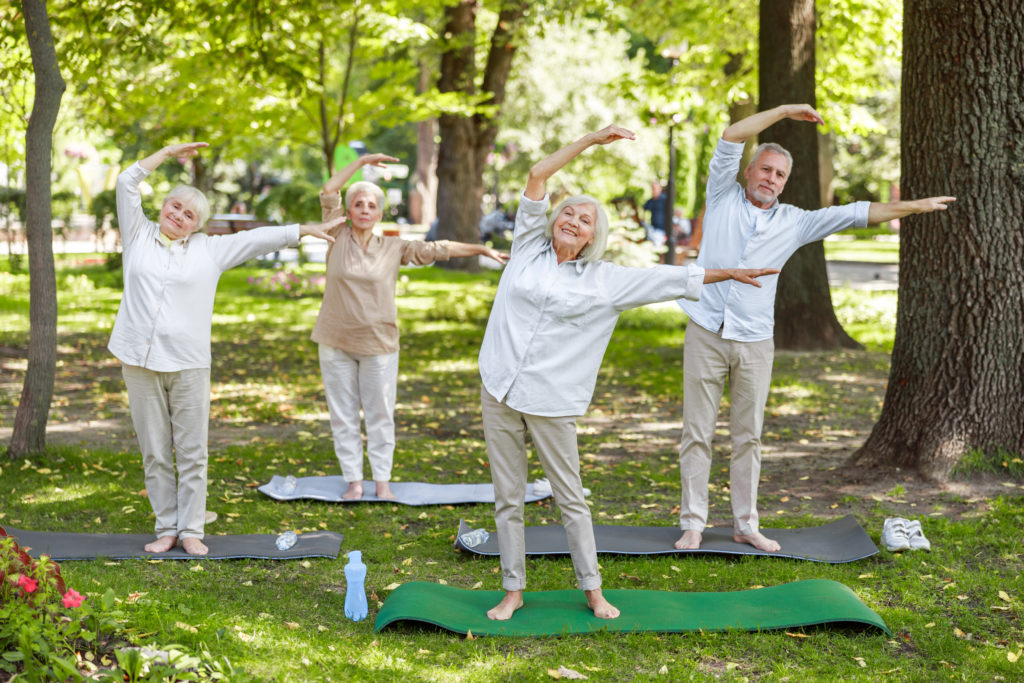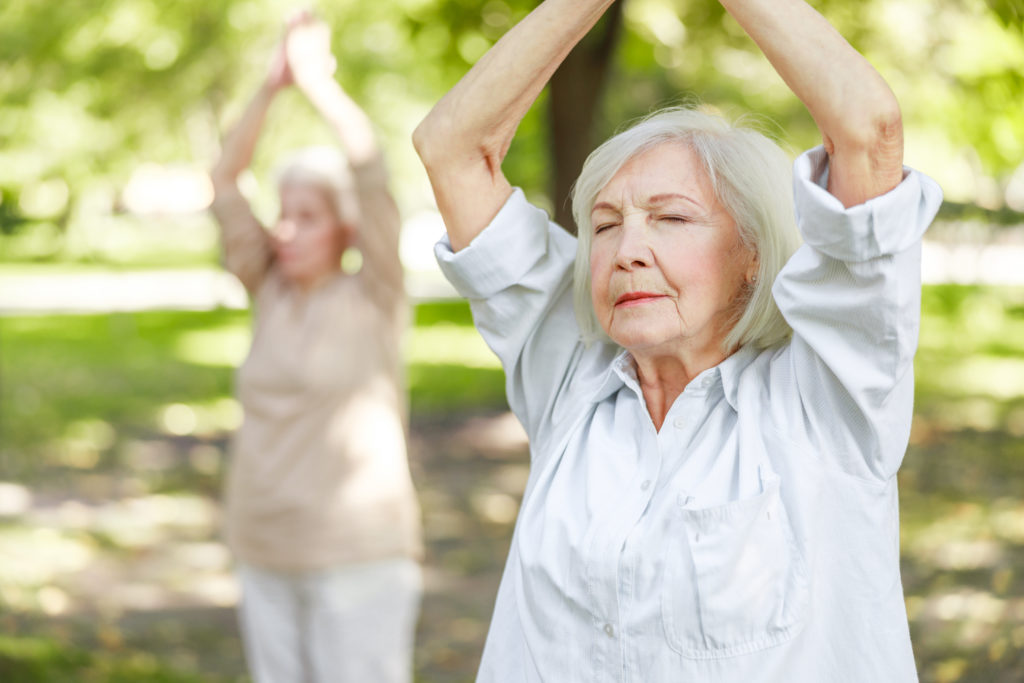By Valerie Burke greenmedinfo.com6 minView Originaltai chi
There are good reasons for Tai Chi’s exploding popularity—its list of evidence-based health benefits is so long that many are calling this walking meditation, “walking medication”.

Tai chi has grown in popularity to the point that it’s giving yoga a run for its money. Now practiced by about 3.5 million Americans,[1] Tai Chi boasts a mountain of scientific literature supporting its health benefits for people of all ages and abilities—from healthy young adults to the elderly or wheelchair-bound. Investigations suggest a regular Tai Chi practice can bring welcome relief from a variety of medical conditions.
Tai Chi is a mind-body practice with a somewhat fuzzy history dating back about 700 years in China. Foundational concepts are believed to stem from the Tao Te Ching, I Ching, and others.[2] Tai Chi remains popular in China, where it’s practiced daily en masse, often early in the morning in parks and open spaces. Slow, gentle movements are integrated with breath work and a variety of cognitive components, including mindfulness and visual imagery. The fact that Tai Chi requires very methodical, low impact movements makes it especially suitable for older adults and those recovering from illness or injury.
Articles are Stacking Up About Tai Chi’s Head-to-Toe Benefits
When it comes to evidence-based health benefits, few exercise modalities can compete with Tai Chi. On GMI’s “therapeutic actions” page, you’ll find studies supporting Tai Chi’s therapeutic benefit for at least 35 diseases, and the following functions:
- Improvements in physical conditioning, muscle strength, coordination, flexibility and recovery
- Reduced pain and stiffness and increased mobility for arthritis sufferers
- Better sleep, improved moods, and better overall quality of life
- Enhanced immune function and slowed aging processes
- Reduced risk of falls and fractures, particularly among older adults
In September 2015, a meta-analysis published in the British Journal of Sports Medicine[3] examined the effects of Tai Chi on four chronic health conditions: cancer, osteoarthritis, heart failure, and chronic obstructive pulmonary disease (COPD). Based on a review of 33 studies, researchers concluded Tai Chi provided at least some benefit for all of these conditions, including strength, balance, and posture—and did so without side effects. Most of the studies involved one-hour Tai Chi sessions done two or three times per week, over the course of 12 weeks.
Tai Chi positively impacted upper limb functional mobility in patients with breast cancer, and reduced symptoms among fibromyalgia sufferers, improving their quality of life. Several studies suggest Tai Chi can improve sleep quality as well.
It turns out that this mind-body practice is also excellent for your bones. Tai Chi appears to increase bone mineral density and reduce bone loss/resorbtion in postmenopausal women and breast cancer survivors. In a Tufts University study, one hour of Tai Chi twice a week for 12 weeks reduced pain and improved mood and physical functioning more than standard stretching exercises among people with severe knee osteoarthritis. In a Korean study, Tai Chi significantly improved flexibility and slowed the disease process for ankylosing spondylitis, a painful and debilitating form of spinal arthritis.

Reduced Heart Attack Risk, Improved Body Composition, Enhanced Immunity
Studies show Tai Chi can give a sizeable boost to your cardiovascular, metabolic, and immune function, as evidenced by the following:
- Significant benefits are demonstrated among individuals with elevated heart disease risk, including better blood pressure regulation,[4] increased exercise capacity and improved cardiac risk profile, as well as improved cardiac function for those with heart failure.[5] Increased Vo2 (a measure of oxygen intake) in patients with recent MI lead researchers to conclude, “Tai Chi may constitute an effective form of cardiac rehabilitation.”
- A group of 21 obese women saw improvements in their resting systolic blood pressure, chair rise test, mood, and percent body fat when implementing a two-hour weekly session of Tai Chi; positive effects were also observed in those with type 2 diabetes, with respect to blood sugar levels and insulin receptor sensitivity.
- Tai Chi appears to exert some positive immunomodulatory actions, such as strengthened resistance to hepatitis B and varicella-zoster viruses. A meta-analysis published in PLOS One investigating the effects of Tai Chi (along with other mind-body therapies) on the immune system found these practices seem to stimulate anti-inflammatory effects, as evidenced by reduced C-reactive protein levels. One study found Tai Chi had “antioxidant” effects in the body after 12 months of practice.
Tai Chi is not what you would consider a “highly aerobic” exercise, which makes the following cardiac study[6] even more compelling. Researchers examined the effects of eight weeks of Tai Chi on women with elevated cardiovascular risk. Researchers concluded Tai Chi helped down-regulate proinflammatory cytokines (associated with increased cardiovascular risk), including interferon-gamma, tumor necrosis factor, interleukin, and IL-4. They also found that the discipline increased “mindfulness, spiritual thoughts and self-compassion.”
Tai Chi’s Psychological Effects are Equally Impressive
Positive psychological impacts may be the most powerful gift Tai Chi has to offer. The broadest review to date is a meta-analysis, published in BioMed Central,[7] that found Tai Chi produced broadly beneficial psychological effects ranging from increased self-esteem to reductions in stress, anxiety, depression, and other mood disturbances.
Results of a 2008 study suggest Tai Chi’s psychological benefits can even extend to traumatized refugees and torture survivors, as well as seniors with major depression. Positive psychological effects have also been documented in those suffering from traumatic brain injuries (TBI). A pilot study found Tai Chi to be effective at mitigating the deterioration in interpersonal functioning among patients with schizophrenia.[8]

Special Benefits for Seniors
Tai Chi offers a number of powerful health benefits for the elderly. Seniors are the fastest-growing segment of our population. The percentage of Americans age 65 and over increased from 4.1 percent in 1900 to 13.0 percent in 2010 and is projected to reach 20.9 percent by 2050.[9] It’s no surprise seniors’ healthcare needs are increasing along with their numbers.
It’s widely known that the elderly have a higher risk of falls and fractures. A 2012 study[10] found Thai Chi more effective than traditional physiotherapy at preventing falls due to its improvements in balance, posture, muscle strength, range of motion, proprioception, and coordination. Three studies support the effectiveness of Thai Chi in reducing bone fractures among older adults, including a 2011 meta-analysis. Other studies show similar benefits for patients suffering from Parkinson’s disease, chronic stroke, and multiple sclerosis (MS).[11]
Tai Chi has been described as a “moving meditation”—but with the abundance of literature highlighting its head-to-toe benefits, some are now calling it “moving medication.” You can learn Tai Chi at home from books or the Internet, but joining a class with an experienced instructor will ensure you’re doing the movements correctly and safely.
References
[1] Statistica Number of participants in Tai Chi in the United States from 2006 to 2013
[2] H. Kurland 1998, 2000 “History of T’ai Chi Ch’uan” www.dotaichi.com
[3] Chen YW, Hunt MA, Campbell KL, Peill K, and Reid WD The effect of Tai Chi on four chronic conditions—cancer, osteoarthritis, heart failure and chronic obstructive pulmonary disease: a systematic review and meta-analyses. Br J Sports Med September 2015 doi:10.1136/bjsports-2014-094388
[4] Yeh G, Wang C, Wayne PM, and Phillips RS. The Effect of Tai Chi Exercise on Blood Pressure: A Systematic Review Preventive Cardiology Spring 2008, Vol.11(2):82-9
[5] Harvard Health Publications: “The Health Benefits of Tai Chi“
[6] Morgan N, Irwin MR, Chung M, and Wang C. The Effects of Mind-Body Therapies on the Immune System: Meta-Analysis PLoS One. 2014; 9(7): e100903.
[7] Wang C, Bannuru R, Ramel J, Kupelnick B, Scott T, and Schmid CH. Tai Chi on psychological well-being: systematic review and meta-analysis. BMC Complementary and Alternative Medicine 2010, 10:23 doi:10.1186/1472-6882-10-23
[8] Ho RT, Au Yeung FS, Lo PH, Law KY, Wong KO, Cheung IK, and Ng SM. . Evid Based Complement Alternat Med. 2012:923925. doi: 10.1155/2012/923925
[9] United States Census Bureau report: “65+ in the United States: 2010“
[10] Tousignant M, Corriveau H, Roy PM, Desrosiers J, Dubuc N, Hebert R, Tremblay-Boudreault V, and Beaudoin AJ. The effect of supervised Tai Chi intervention compared to a physiotherapy program on fall-related clinical outcomes: a randomized clinical trial. Disabil Rehabil. 2012;34(3):196-201. doi: 10.3109/09638288.2011.591891
[11] Azimzadeh E, Hosseini MA, Nourozi K, and Davidson PM. Effect of Tai Chi Chuan on balance in women with multiple sclerosis. Complement Ther Clin Pract. 2015 Feb;21(1):57-60. doi: 10.1016/j.ctcp.2014.09.002.
